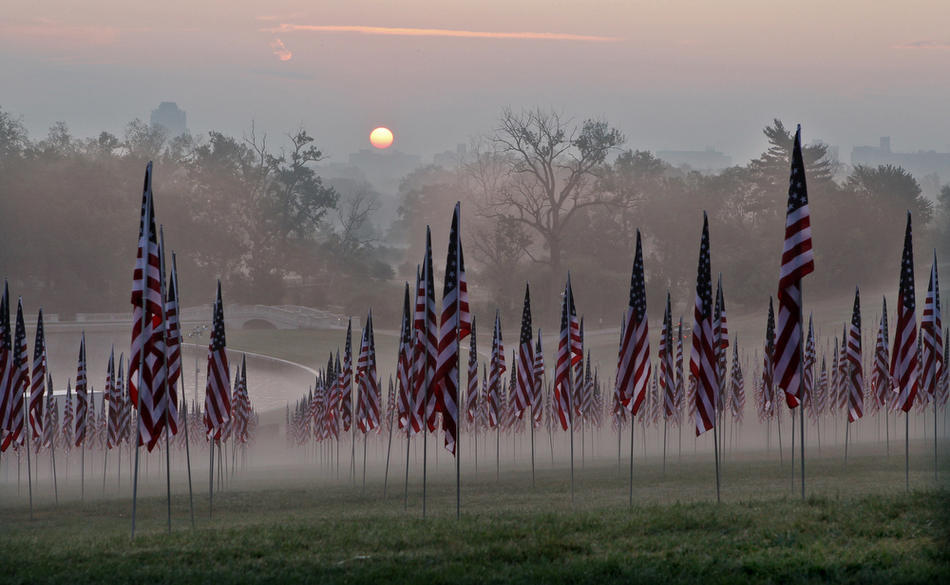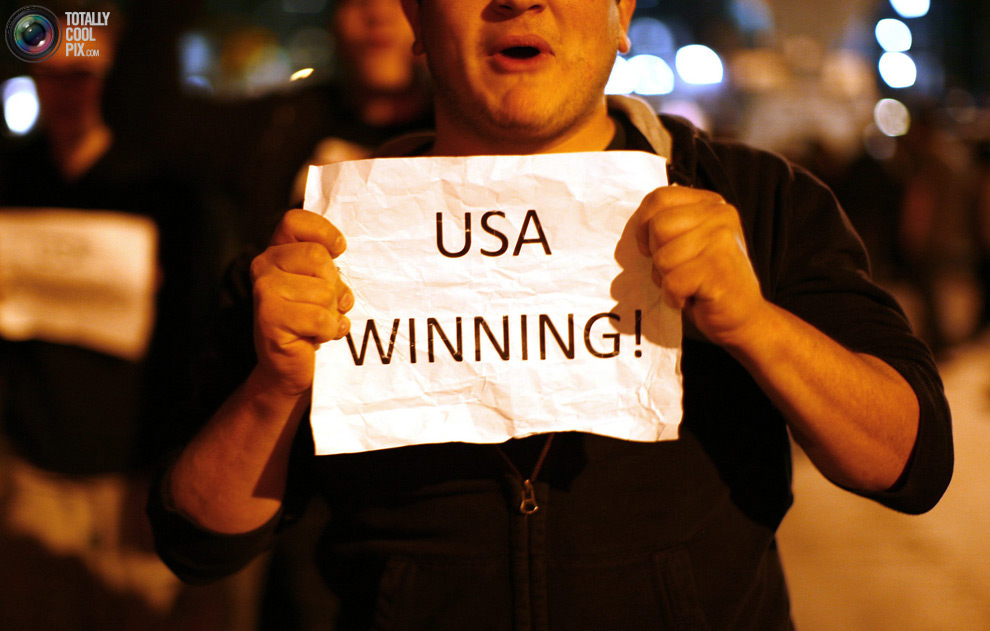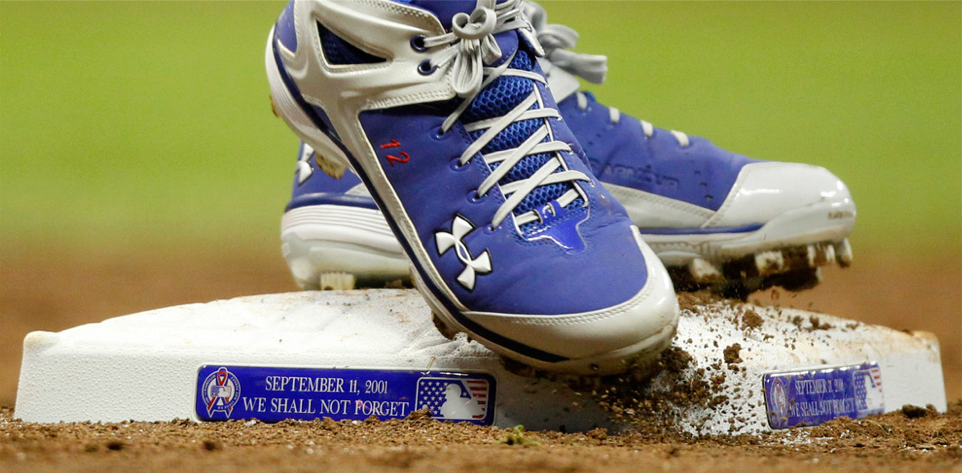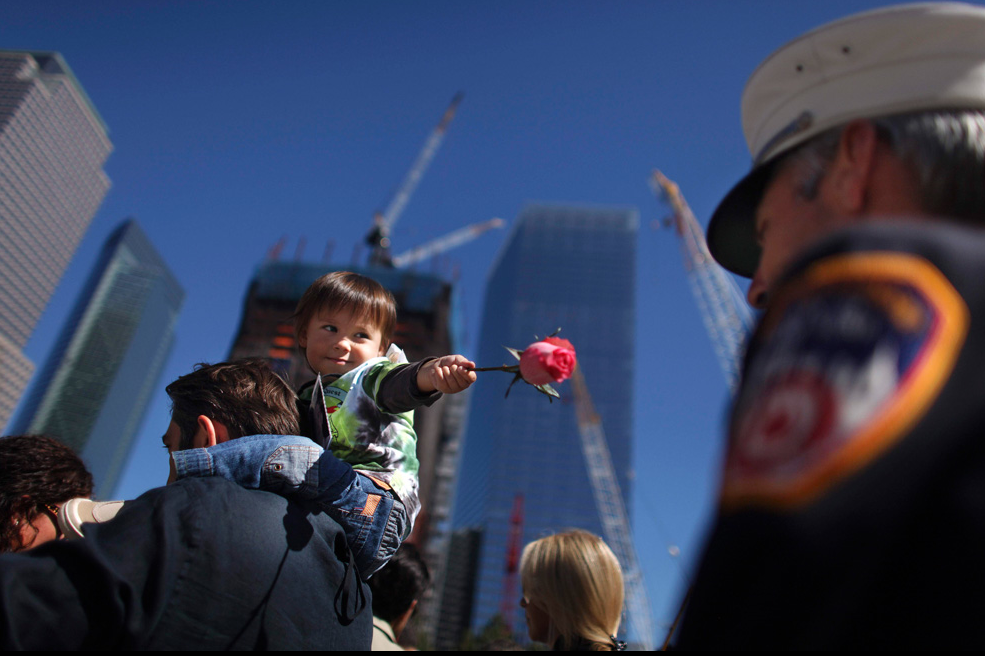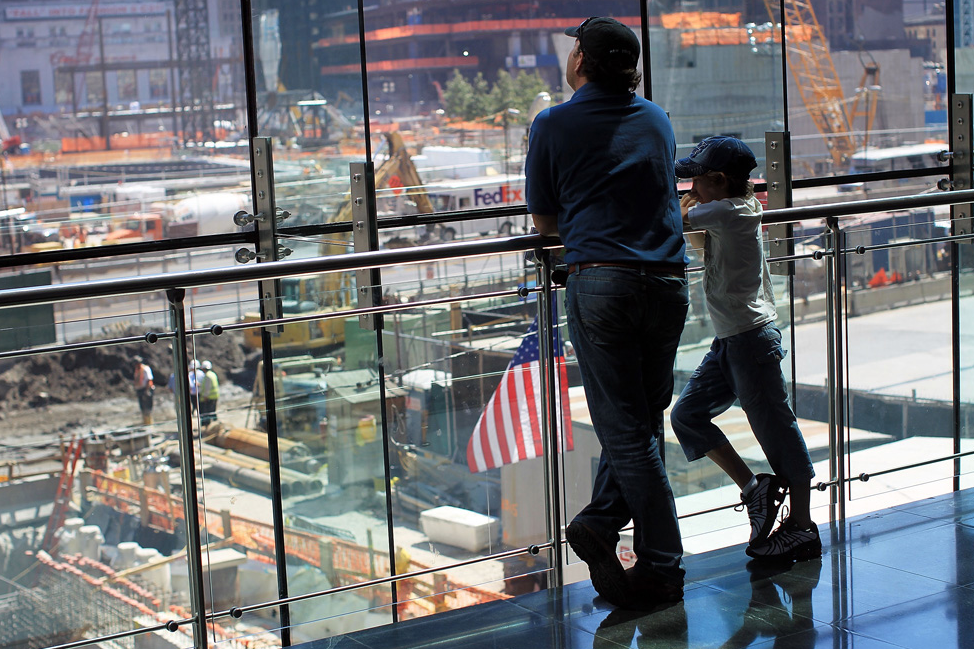I expected to see a lot of U.S. flags on display for the 9/11 anniversary and commemoration this past weekend. And of course my expectations were fully met with ersatz versions of the Stars and Stripes represented in virtually every size and variety imaginable, ranging from lapel pins to newly inked tattoos and decorated cakes to a flag the size of a football field requiring hundreds of people to manage its presentation. What I didn’t expect to see were three thousand flags clustered together in one place, as in the photograph above of Forest Park in St. Louis (and repeated in other places across the country as well).
I don’t think of myself as a curmudgeon in such matters and I do pledge allegiance to the flag on the appropriate occasions, but I also find the excess of display in the photograph above as more than just a spectacle of national hubris. Rather, it strikes me as symptomatic of a larger cultural problematic. The flag, of course, is a national symbol. And it means many different things to many different people, affecting the full gambit of civic emotions from patriotic piety to nostalgia to cynicism. But the question is, what do three thousand flags represent that a single flag cannot stand in for? Or perhaps more to the point, given the presumed gravity that we commonly grant to the meaning of the flag as the national banner–that which marks us as “one nation, indivisible,” and for which we are willing to sacrifice all–how can they represent it better?
One might see the field of flags as symbolic of the actual fatalities on 9/11, but the numbers don’t quite add up, with the official casualty count just short of three thousand, and so the potential for the mystique of identification with individual victims is not satisfied. But even if the numbers did add up, the question would still abide in some measure for the massive replication and concentration of flags in a single space has something of an inflationary effect on the symbolic currency of the national icon. And there, I think, is the rub. For there is little doubt that the symbolic value of the flag has diminished in recent years in proportion to the diminution of our domestic and international stature. The multiplication of flags in such huge numbers thus perhaps functions as something of a symbolic palliative for our current psychic anxieties about national greatness. We simply need more flags to fund our national urge.
What the photograph reminds us is that as with the effects of inflation on the dollar, the flag simply doesn’t buy as much as it used to. And more, that at some deep level we know that but don’t want to admit it.
Photo Credit: J.B. Forbes/AP Photo/St. Louis Post-Dispatch
